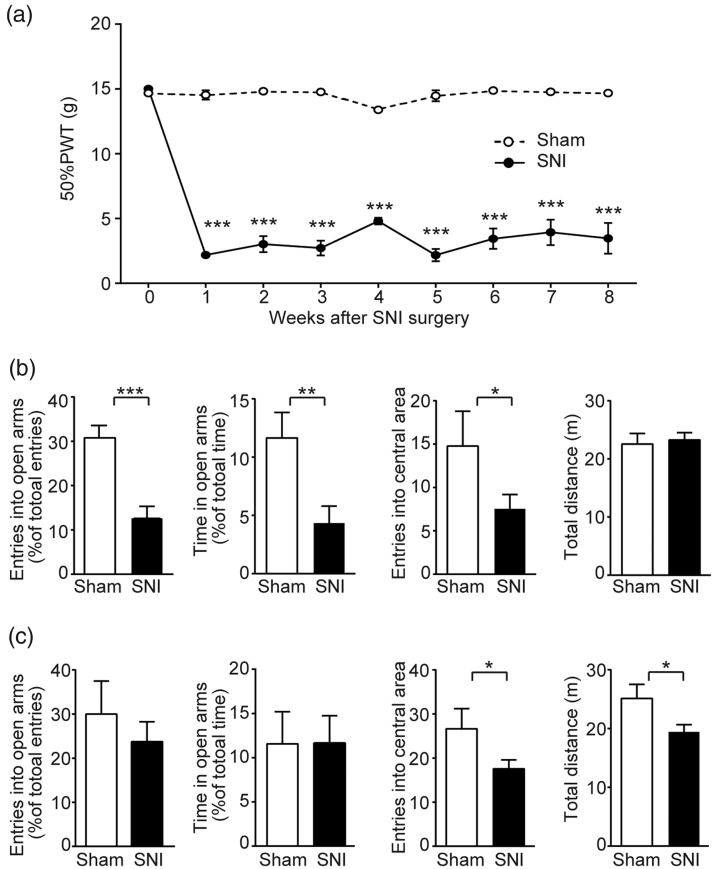Figure 1.
Behavioral changes of SNI rats after surgery. (a) Time course of development and maintenance of tactile allodynia following SNI surgery. Mechanical threshold was expressed by 50% PWT measured by a series of von Frey filaments using the up–down method at the surgery side after surgery. (b) Apparent anxiety-like behaviors of SNI rats at the eighth week after surgery. SNI rats displayed a decrease in open arm entries and open arm time in EPM, as well as the number of entries into the central area of the open field. No difference in the total distance travelled in the open field between SNI and sham group. The number of entries into open arms was calculated as the percentage of total entries into both open and close arms in EPM. The time in open arms was expressed as the percentage of total time in EPM. The number of entries into the central area and the total distance were counted for an entire test period (10 min). (c) Lack of anxiety-like behaviors of the SNI rats at the fourth week after surgery. No difference was seen in either entries into or time in open arms in EPM. SNI rats showed decreases in both total distance and number of entries into central area. Data are represented as mean ± s.e.m. Statistical significance is assessed between Sham and SNI groups: *p < 0.05, **p < 0.01, ***p < 0.001 (unpaired t-test). SNI group (n = 15), Sham group (n = 17); for time in open arms at the fourth week after surgery: SNI group (n = 12), Sham group (n = 10).
SNI: spare nerve injury; PWT: paw withdrawal threshold.

